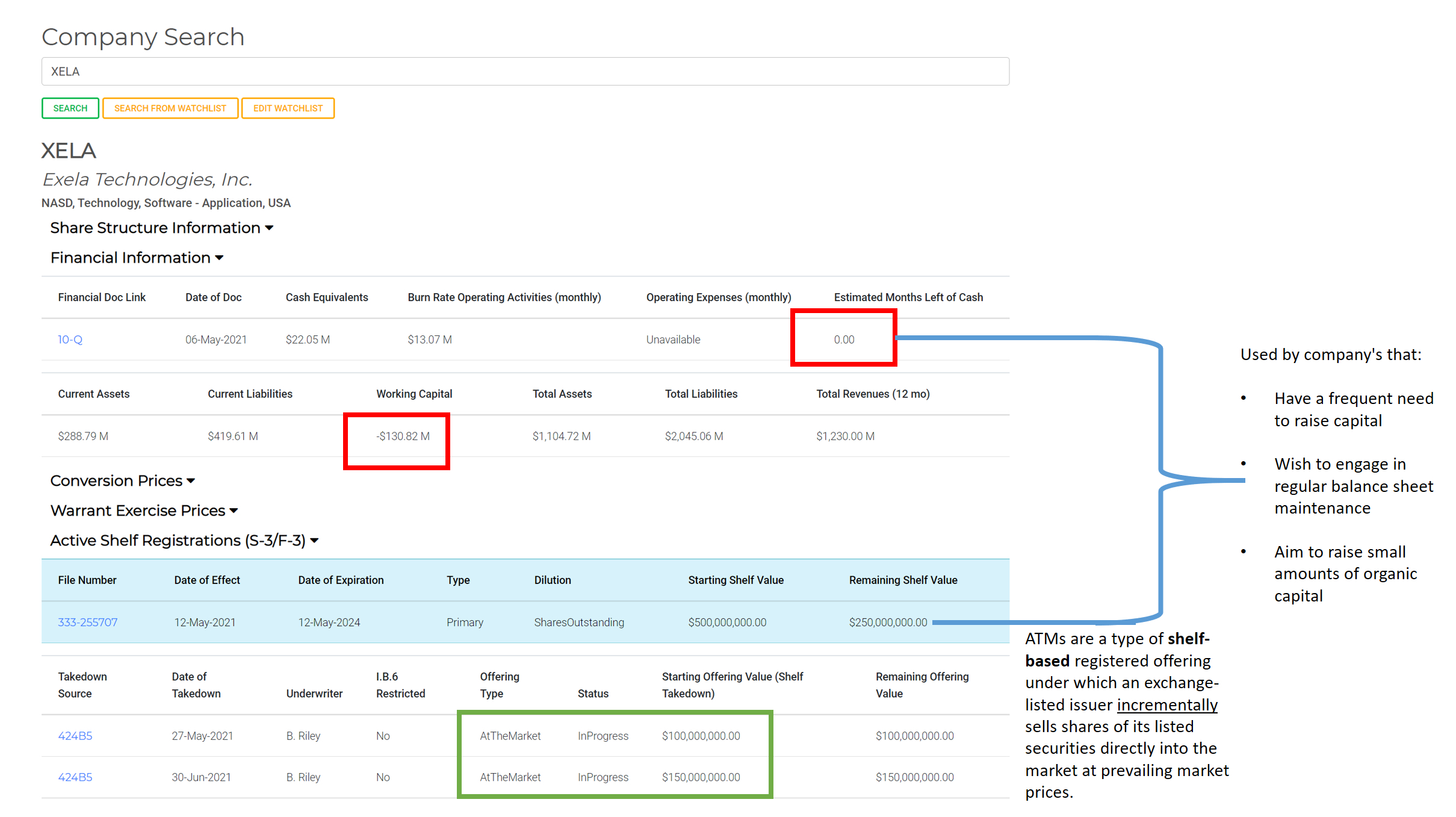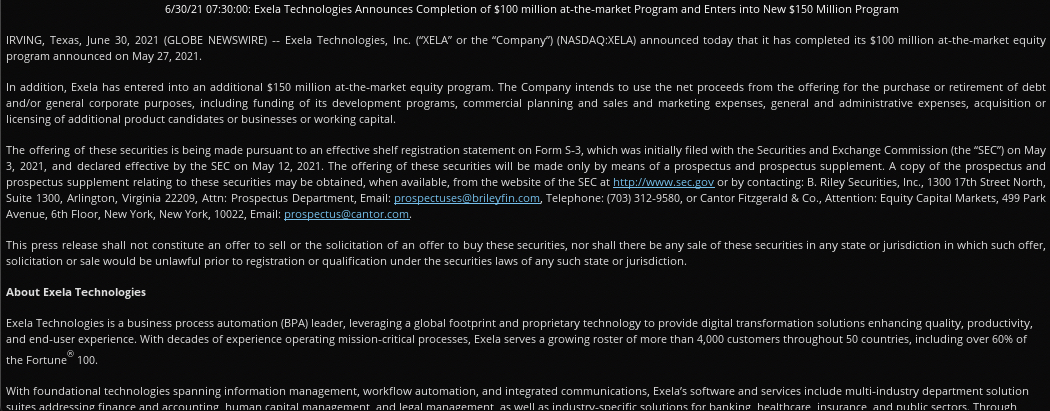Published on July 19, 2021
What is an ATM Offering?
An ATM program allows a public company to raise capital over time by offering securities into the already existing trading market. The company sells newly issued shares periodically, over time, on an as-needed basis based on the current trading price of the securities.
Why would a company use an ATM Offering?
- Raise capital by selling stock into natural trading volume of the market
- Often effective whenever or not the market is receptive to other types of offerings
- Flexibility in terms of commitment and use
- Not designed for a fixed amount of shares, but a fixed amount of capital
Comparison to Traditional Follow-on Offering
At-the-Market Offering
- A continuous offering
- Shares are dribbled out
- Sold on an agency basis through one or more distribution agents; may be sold on a principal basis
- Issuer determines amount, floor price, and duration of any issuance
- Amounts, floor prices, and duration of placements may vary over the life of the program, and can be changed at any time
Follow-on Offering
- A "bullet" or single offering
- Shares are sold all at once
- Sold as principal through a syndicate of underwriters
- The clearing price and size of issuance is based on investor demand at a specific point in time
Identifying an ATM Offering in FlashSEC

Impact of ATM on Price Action
$XELA saw a 40% decrease off of its highs when the ATM offering was triggered on 30-Jun-2021 due to an increase of supply increasing both outstanding shares and float.

